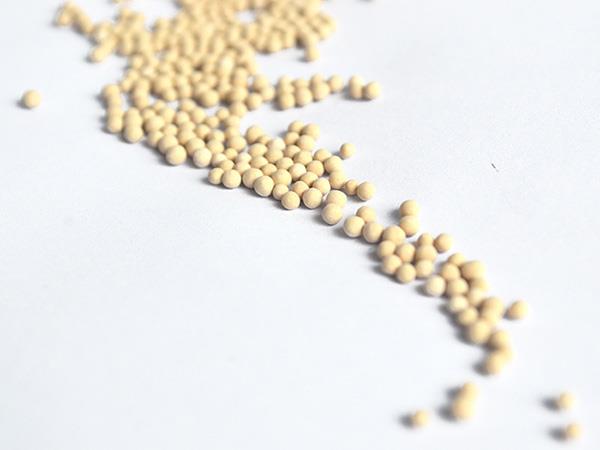1. The influence of the molecular sieve adsorption amount on the life of the insulating glass.
The adsorption capacity of the insulating glass drier should be based on the adsorption capacity of 10% relative humidity. The adsorption capacity when the relative humidity is high cannot be used as the standard for detecting the dew point control ability of the desiccant, so only the relative humidity is 10%. The adsorption capacity can reflect the number of years that the molecular sieve can guarantee the service life of the insulating glass. Some desiccant instructions only mention the amount of adsorption, and do not speak the test conditions, in fact, it does not make any sense. For example, compared with the molecular sieve desiccant, the silica gel desiccant has a low depth adsorption capacity, but its shallow adsorption capacity is large. For example, the C-type silica gel desiccant can absorb three times its own weight at a relative humidity of 90% at 30 ° C. It is unmatched by molecular sieves under the same conditions. But what is the significance of such a high adsorption capacity for insulating glass? Because the temperature inside the hollow glass is filled with water vapor under such conditions, the adsorption capacity at 10% relative humidity is the life of the insulating glass. The most important indicator to be measured, the adsorption capacity at other high relative humidity cannot measure the dew point control ability of the desiccant in the dry environment of the hollow glass.

2. The meaning of burning loss and the actual significance.
The loss on the desiccant, the focus is to control the initial water content of the desiccant, while also ensuring the relatively inert characteristics of the desiccant. The initial water content of the desiccant is too high, which means that the desiccant may have been excessively absorbed. At this time, the dew point control ability of the desiccant is greatly reduced, and the initial dew point of the insulating glass filled with the desiccant is also increased, which is correspondingly reduced. The service life of the insulating glass; in addition, the loss of ignition too high may be another problem, that is, the desiccant may contain chloride, or easily decomposed inorganic substances, such as nitrite, acid or alkali, or Contains unstable organic matter. Therefore, the loss of ignition is too high, and it is suspected of containing unstable chemical substances. Such substances have corrosive effects and seriously affect the service life of the insulating glass.
3. The meaning of temperature rise and test methods.
Strictly speaking, temperature rise is not a technical indicator, but a commercial indicator. The increase in temperature after water absorption is an important feature of molecular sieves, but it is not a unique feature of molecular sieves. If the temperature of a desiccant rises, it may be a molecular sieve, calcium chloride, calcium oxide or a strong acid strong base desiccant. In this way, it can be judged whether or not its aqueous solution is corrosive. Even if we exclude other corrosive desiccants, we still can't distinguish between 3A molecular sieves and 4A molecular sieves, so there must be an instrument that tests the inspiratory volume to test the molecular sieves of type 3A or 4A before finalization. Therefore, using the temperature rise method alone to judge the quality of the hollow glass desiccant does not have much practical significance. It is necessary to judge the quality of the desiccant in terms of the pH and irritant characteristics (corrosiveness) of the test aqueous solution and the venting amount of the test desiccant. Good or bad. Under the premise of no corrosiveness and qualified gas release, the higher the temperature rise, the better the quality of the desiccant, and the longer it takes to ensure the dew point life of the hollow glass.
However, the detection of temperature rise must have a scientific standard method, and the unscientific method cannot measure the quality of the desiccant.
First, the temperature rise cannot be measured by the volume method. The adsorption amount of the desiccant is calculated according to the weight. The temperature rise is an indirect rough method for testing the water absorption capacity of the desiccant. The amount of water is mixed to test the temperature rise, and the higher the density of the desiccant, the higher the temperature rise. Because the volume is the same, there is more than the mass, and the molecular sieve desiccant with the same adsorption capacity has a high density and a low temperature rise. Therefore, it is reasonable to test the temperature rise by the gravimetric test.
Secondly, it is not possible to test the temperature rise by adding water and then adding molecular sieve. The molecular sieve has a bulk density smaller than that of water, and the molecular sieve has a lower density. The longer it floats on the water surface, the slower the speed of falling from the water surface. The whole heat dissipation time is elongated, and the heat dissipation time is not concentrated like the molecular sieve with high density. Therefore, if the temperature is increased by adding the water and then adding the molecular sieve, the molecular sieve with the same adsorption capacity will have a lower density of the molecular sieve with a lower density. Therefore, the test temperature rise should be tested by adding a molecular sieve and then adding water.
Again, the temperature rise is also related to the following factors:
(1) The smaller the molecular sieve particle size, the higher the temperature rise;
(2) 4A molecular sieve is higher than 3A molecular sieve;
(3) The better the insulation of the test container, the higher the temperature rise;
(4) The material and shape of the container are different, which affects the temperature rise result;
(5) The temperature of the water affects the temperature rise;
(6) The position of the test point does not affect the temperature rise;
(7) The sensitivity of the thermometer does not affect the temperature rise;
(8) The difference in molecular sieve and water affects the temperature rise (even if the ratio is the same).
Finally, the temperature rise of the test is also related to the individual test methods. Therefore, in order to make the temperature rise test meaningful, it is necessary to use a uniform and correct method for testing. Otherwise, the level of temperature rise, especially the low level, does not make any sense.
To make the measurement of temperature rise a reference value, you must ensure that:
(1) All are 3A molecular sieves;
(2) the size of the particle size is close;
(3) using the same temperature rise tester;
(4) Test with the correct method.
Only under these preconditions, the higher the temperature rise, the better the desiccant, the more beneficial to improve the service life of the insulating glass.





